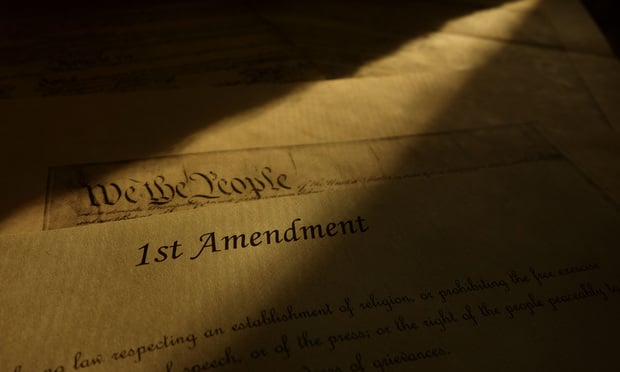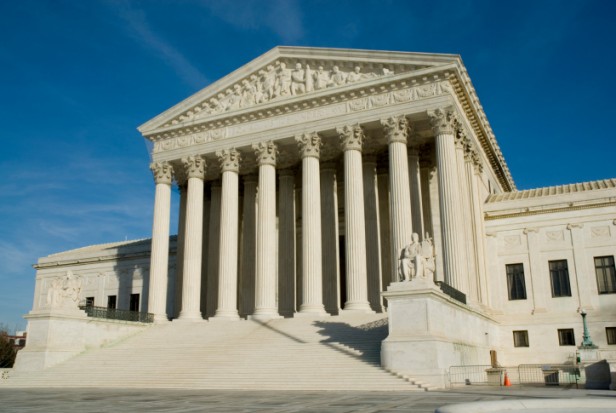Features

Adidas Stripe Design Battle Reveals Intricacies of Trademarks In the Fashion World
Although the bitter legal battle between Adidas and Thom Browne is far from over on either side of the pond, the case illustrates the challenges of ensuring trademark protection for simple and widely employed design elements.
Features

Trademark Trial and Appeal Board's View of Parodies
While most trademark-related lawyers are familiar with the "Bad Spaniels" and "Chewy Vuitton" federal court decisions on trademark parody, decisions by the USPTO Trademark Trial and Appeal Board on trademark parody marks are rarely examined.
Features

Intellectual Property In Legal Tech: Lessons from Recent Cases
As technology continues to permeate the legal industry, the significance of IP in safeguarding innovations, ensuring fair competition, and fostering a culture of creative legal solutions becomes paramount.
Features

Creative Expression vs. the Lanham Act: Six Months of Cases After Jack Daniel's
Last Term, the U.S. Supreme Court decided Jack Daniel's v. VIP Products — a case involving interaction between the Lanham Act and the First Amendment. This article traces the lower courts' reactions and applications to that decision.
Features

How Energy Drink's "Purple Rain" Trademark Application Was Rejected
Despite the fact that the trademark manual of examining procedure (TMEP) are readily available and searchable online, there are still a large number of applications that trademark examiners and judges must reject because the application does not conform to one or more conditions set forth in the Lanham Act or TMEP.
Features

The Presumption of Irreparable Harm After the Trademark Modernization Act Of 2020: The Good, the Bad and the Ugly
This article explores developments (both positive and negative) in the post-TMA world in which courts have wrestled with implementation of the presumption of irreparable harm in trademark cases.
Features

Supreme Court to Consider If Lanham Act's Name Trademark Prohibition Violates First Amendment
This case has important implications not only for trademark registrations, but also potentially in determining collisions between trademark rights, rights of publicity, and freedom of speech considerations in future cases.
Features

How Far Can You Reach? The Territorial Limits of Lanham Act Infringement and False Designation of Origin Claims
On June 29, 2023, the U.S. Supreme Court set new geographic limits for infringement and false designation of origin claims raised under Sections 1114 and 1125(a) of the Lanham Act. Given the global nature of business today, the decision highlights the need for trademark owners to continually reassess and, perhaps, expand their international trademark registration strategy as product lines and brands become more international in scope.
Features

The Power, Perils and Pitfalls of Lookalikes
In April 2021, a food fight broke out between two of the UK's largest supermarkets. Marks and Spencer launched legal action against Aldi over the latter's alleged copy of its signature "Colin the Caterpillar" cake. This article takes a look at the issues surrounding lookalikes, what the English courts have said about them and what can be done by brand owners to protect against the risks they present.
Features

Supreme Court's 'Bad Spaniels' Decision Didn't Overturn Rogers, But …
In a win for trademark holders, the U.S. Supreme Court offered a narrow ruling in the dispute involving "dog toys and whiskey."
Need Help?
- Prefer an IP authenticated environment? Request a transition or call 800-756-8993.
- Need other assistance? email Customer Service or call 1-877-256-2472.
MOST POPULAR STORIES
- The DOJ's Corporate Enforcement Policy: One Year LaterThe DOJ's Criminal Division issued three declinations since the issuance of the revised CEP a year ago. Review of these cases gives insight into DOJ's implementation of the new policy in practice.Read More ›
- Use of Deferred Prosecution Agreements In White Collar InvestigationsThis article discusses the practical and policy reasons for the use of DPAs and NPAs in white-collar criminal investigations, and considers the NDAA's new reporting provision and its relationship with other efforts to enhance transparency in DOJ decision-making.Read More ›
- The Roadmap of Litigation AnalyticsLitigation analytics can be considered a roadmap of sorts — an important guide to ensure the legal professional arrives at the correct litigation strategy or business plan. However, like roadmaps, litigation analytics will only be useful if it's based on data that is complete and accurate.Read More ›
- The DOJ's New Parameters for Evaluating Corporate Compliance ProgramsThe parameters set forth in the DOJ's memorandum have implications not only for the government's evaluation of compliance programs in the context of criminal charging decisions, but also for how defense counsel structure their conference-room advocacy seeking declinations or lesser sanctions in both criminal and civil investigations.Read More ›
- Understanding the Potential Pitfalls Arising From Participation in Standards BodiesChances are that if your company is involved in research and development of new technology there is a standards setting organization exploring the potential standardization of such technology. While there are clear benefits to participation in standards organizations — keeping abreast of industry developments, targeting product development toward standard compliant products, steering research and intellectual property protection into potential areas of future standardization — such participation does not come without certain risks. Whether you are in-house counsel or outside counsel, you may be called upon to advise participants in standard-setting bodies about intellectual property issues or to participate yourself. You may also be asked to review patent policy of the standard-setting body that sets forth the disclosure and notification requirements with respect to patents for that organization. Here are some potential patent pitfalls that can catch the unwary off-guard.Read More ›
